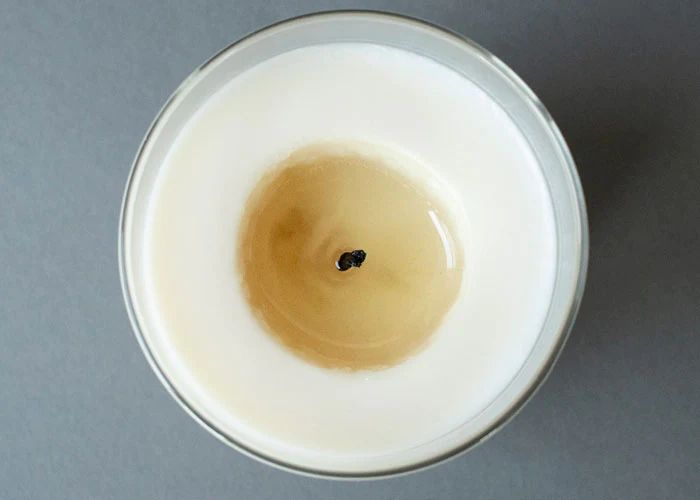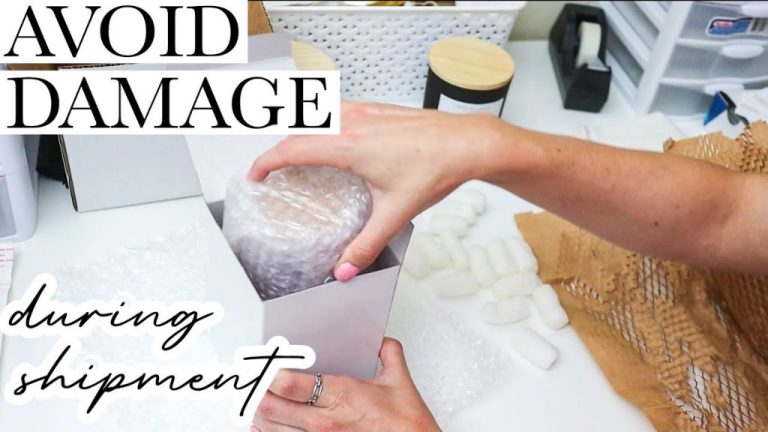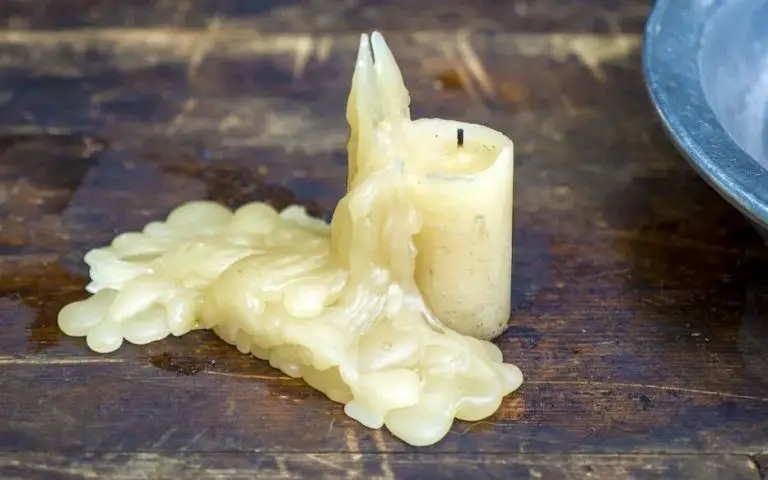What Causes Candle Tunneling?
Candle tunneling is a common frustration for candle lovers. This phenomenon occurs when a hole forms in the center of a candle, leaving wax around the edges unmelted. Not only does tunneling make a candle burn unevenly, it also shortens its lifespan. Understanding what causes tunneling and how to prevent it allows you to get the most out of your candles. This guide will explore the reasons tunneling happens and provide tips to avoid it, so you can enjoy flawlessly burning candles.
What is Candle Tunneling?
Candle tunneling is a phenomenon where the candle forms a tunnel down the center as it burns, leaving wax around the sides. This happens when the wax pool doesn’t reach the outer edges of the container as the candle burns. The result is a candle that leaves unused wax around the sides. Candle tunneling means the candle isn’t burning evenly.
Visually, a tunneled candle will have a deep hole down the center, exposing a large portion of the wick. Meanwhile, the outer edges still have pristine wax that hasn’t melted yet. It creates a ring effect rather than an even pool of wax as the candle burns down. The tunnel may be very narrow or quite wide depending on what’s causing the issue.
Causes of Candle Tunneling
Candle tunneling occurs when the wax around the wick melts faster than the outer wax, creating a hole or tunnel in the candle. There are several potential causes of candle tunneling:
The most common cause is using the wrong wick size. If the wick is too small for the candle’s width and wax volume, it won’t generate enough heat to melt the outer wax. The inner wax surrounding the wick melts faster, leaving a tunnel. [1] [2]

The wax composition itself can also lead to tunneling if it has a high oil content. Softer waxes with more oil melt and burn quicker around the wick. Harder waxes with less oil resist melting and are more prone to tunneling.
Environmental factors like drafts or low temperatures can cause tunneling by cooling the outer wax and preventing even melting. Keeping candles away from drafts and ensuring room temperature is warm enough can help.
Finally, tunneling can happen if the candle isn’t burned long enough. The wax immediately around the wick melts first, so burning too briefly leaves a tunnel. Burning for at least one hour at a time allows the melted wax to pool outwards and prevent tunneling.
Wick Issues
One of the main causes of candle tunneling is related to the wick. Specifically, the length, material, and centering of the wick can impact tunneling. A wick that is too short for the diameter of the candle can cause tunneling because it does not fully melt the outer wax. The flame simply isn’t high enough to melt the wax at the edges. A wick that is too long can also tunnel because the flame gets too high, burning the wax immediately around the wick faster than the rest of the candle.
The material the wick is made of also plays a role. Some materials like paper or cotton don’t burn as evenly, causing uneven melting. A braided wick that has a flat shape is ideal for even burning and preventing tunneling. Wicks with zinc or tin cores help the wick stay rigid as it burns, keeping the flame centered.
If the wick is off-center in the candle, this can also lead to tunneling as the flame is closer to one side. The wax near the flame melts faster than the other side. Be sure to trim wicks to 1⁄4” before lighting and keep the wick centered as the candle burns down to promote an even burn.
According to Prosperity Candle (https://www.prosperitycandle.com/blogs/news/how-to-fix-candle-tunneling), using the proper wick for the size of the candle container is critical to prevent tunneling. A wick that is too small or large for the candle diameter won’t allow complete melting across the candle.
Fuel Issues
The makeup of the wax itself can lead to tunneling. Softer waxes with a lower melting point are more prone to tunneling because they melt quicker and the cooler outer wax remains solid. Harder waxes like soy, beeswax, and paraffin have higher melt points and burn slower and more evenly (Harlem Candle Company, 2023).
High fragrance loads, meaning a high concentration of fragrance oils, also increase tunneling. The fragrance oils burn off more quickly than the wax, creating a deeper melt pool surrounding the wick. Going with a lower fragrance load around 5-7% helps reduce tunneling (Prosperity Candle, 2022).
Certain additives like coconut oil or palm oil can also accelerate melting. Opting for candles with fewer additives results in a more stable burn (PartyLite, 2022).
Environmental Factors
The environment around a candle can also lead to tunneling issues. Air currents, humidity, and temperature all play a role in how a candle burns. According to Prosperity Candles, drafts or consistent air flow on or around a burning candle can cause the flame to flicker and smoke, making it burn unevenly. This irregular burning can result in tunneling.
Humidity can soften candle wax, causing it to melt more quickly than intended. High humidity coupled with a strong wick may make the wax pool around the wick melt faster than the rest of the candle’s surface. The combination allows the wick to access more oxygen and burn hotter, accelerating the tunneling effect.
Extreme temperatures, either high or low, can also impact burn quality. If a candle is too cold, the wax will not melt properly and the full width of the candle may fail to pool as it burns. On the other hand, high heat can rapidly melt the wax and encourage an accelerated burn, resulting in a tunneled candle.
Candle Cares
Proper candle care can help prevent and fix tunneling. Here are some tips:
- Trim the wick to 1⁄4 inch before lighting. Long wicks can cause tunneling by creating a larger flame. Trim to the proper height so the flame is only as large as needed (Harlem Candle Co.).
- Allow the candle to fully melt and pool before burning. The first burn should go for 4+ hours until the entire top layer melts. This will ensure an even melt for consistent burning (Prosperity Candle).
- Burn for at least 1 hour each time to allow the entire top layer to melt. Shorter burns can create a cooler pool that solidifies too quickly.
- Keep wicks centered as the candle burns. Wicks should stay in the middle of the melted wax pool (Prosperity Candle).
- Avoid drafts or frequently blowing out the candle, as this can cause uneven melting.
With proper care, you can help prevent tunneling before it starts. But even with good practices, some candles are prone to the issue based on wick size, wax blend, diameter, etc. Troubleshooting methods can help fix existing tunneling problems.
Troubleshooting
If your candle is tunneling, there are some simple tips to try to fix the issue before throwing it away.
According to Harlem Candle Company, one of the most effective methods is to use a hair dryer to melt the wax and even out the surface. First blow out the flame if lit, then use a low setting on the hair dryer to gently heat the wax and melt the edges of the tunnel inward until the surface is even again. This helps redistribute the wax so it can burn more evenly next time. Be very careful not to overheat any one area when using a hair dryer.
Prosperity Candle recommends a similar approach, advising to use a hair dryer to melt the entire top layer of wax, evening it out before relighting the candle. Heat the surface just enough to smooth it over while being cautious not to scorch or overheat the wax.
You can also try fixing a tunneled candle by placing a piece of aluminum foil over the melted wax, then lighting the candle again on top of the foil. This provides a flat, even surface for the flame to melt across. Remove the foil once the tunnel fills in with melted wax. Just be very careful not to overheat the foil or wax when attempting this method.
When to Toss It
There comes a point when a tunneled candle is beyond saving and needs to be discarded. Here are the signs that a candle is beyond repair and should be tossed:
The wick is completely drowned or stuck to the bottom of the glass. If you can’t free the wick or it’s become detached from the wax pool, it’s impossible to fix the tunneling.
The wax has turned grainy or separated from oil. This makes the wax prone to soot, unintended shapes, and poor scent throw.
The edges are completely solid with no melted wax pool. Attempting to salvage an extremely tunneled candle risks fire and safety hazards.
Multiple burn attempts to fix the tunneling do not work. If blow drying, foil tents, or wick trimming have all failed, it likely means the wax or wick quality is very poor.
The candle doesn’t smell anymore or the fragrance has changed into something unpleasant. Aromatic oils can evaporate from heat and concentrated single wick burning.
You see smoke or soot marks during burning. Soot is a sign of poor combustion and risks triggering allergies or breathing issues.
The tunnel reaches over halfway down the candle. Once tunneled past the midpoint, the wax around the edges will never melt evenly again.
The glass feels abnormally hot. This may mean the wick is too large for the wax pool, making proper melting impossible.
Pay attention to these red flags during use. While occasional tunneling can be fixed, repeated deep tunneling that worsens over time almost always necessitates throwing the candle out for safety reasons. Don’t risk potential fire or health hazards.
Conclusion
In summary, candle tunneling is a common issue caused by a variety of factors like the wick being too large or small, wax pooling issues, improper curing of the wax, and environmental conditions like drafts or low humidity. While frustrating, there are several troubleshooting tips to try to prevent and fix tunneling like trimming the wick, using foil to melt wax on the sides, or adding wax beads. In severe cases where the tunneling cannot be fixed, it’s best to extinguish the candle and start with a new one. The key takeaways are to watch for signs of tunneling early, address wick and wax issues promptly, and be aware of environmental conditions that can exacerbate the problem. With vigilance and the right troubleshooting, it’s possible to fully enjoy candle tunneling-free burns.






